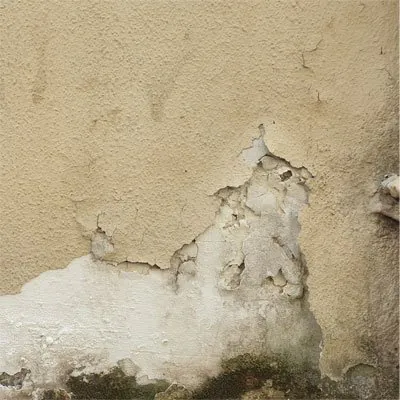Contaminated medical devices can have serious consequences for patient health and diagnostics. Modern analysis methods are an important part of quality management.
In modern medicine, high-quality medical products are crucial. In addition to perfect functionality, freedom from germs is particularly essential for safe use. Regardless of whether it is syringes, laboratory plastic or accessories for electrical inhalation devices and pumping systems for breastfeeding mothers: it is the responsibility of the manufacturers to ensure that their products are free of germs and endotoxins through comprehensive analysis. Collaboration with independent special laboratories and the most modern analysis methods are essential for the producers’ quality management.
What are medical devices?
“Medical devices” refers to a wide range of instruments, machines, software, materials and other items used for medical purposes. Medical devices play a crucial role in diagnosing, preventing, monitoring or alleviating diseases. The products range from simple dressing materials, cannulas or laboratory accessories such as Petri dishes or test tubes to complex implants and medical devices. In Switzerland, the Federal Law on Medicines and Medical Devices regulates the handling and requirements for medical devices. The focus is on protecting the health of people and animals.
The requirements for the reprocessing of medical products are regulated in Article 72 of the Swiss Medical Devices Ordinance. All medical products – whether single-use or multiple-use – must be prepared in accordance with current technical and scientific findings as well as the manufacturer’s information and hygiene requirements. This usually includes cleaning, disinfection, functional testing, packaging, sterilization, transport and storage. Appropriate methods must be used in all steps that correspond to current technical and scientific standards and whose demonstrable effectiveness is guaranteed in a comprehensible and repeatable manner within an appropriate quality management system.
Manufacturers of reusable medical devices – such as pumping systems for nursing mothers or electric inhalation devices – are obliged to provide users with the information necessary for professional sterilization.
How are germs and endotoxins detected on medical products?
To ensure that medical devices have the required purity and safety for their intended use, manufacturers work with specialist laboratories that specialize in medical device analysis. As part of the quality management of the production companies, the scope of the tests is based on the legal requirements and standards as well as individual manufacturer specifications.
The external analysis laboratories such as Biolytix play a central role in the safety of germ-free plastic products. They not only have the appropriate equipment, but above all the specialist knowledge to carry out various analyses. At the same time, consulting services and the development of test procedures individually tailored to the respective products are very important.
Since medical devices include a wide range of different products, the test procedures must be coordinated depending on the item and intended use. A common method for detecting endotoxins is, for example, the LAL test. There are also various options for identifying or eliminating germs on medical devices. Depending on the analyte, classic cultural methods are also used in addition to ELISA or PCR tests, although these take more time than, for example, the highly sensitive PCR test.
Important to know: Medical plastic includes a wide range of different items – from bandages to laboratory plastic to medical rental equipment. The analysis methods must always be chosen depending on the product and resources. Close coordination between the manufacturer and the respective laboratories is essential.
How does medical devices become contaminated?
Medical devices can become contaminated with different microorganisms in different ways. Bacteria such as Staphylococcus, Streptococcus, E. Coli as well as fungi and viruses settle on the surfaces or in individual parts such as tubes. When they come into contact with patients or users, they can cause infections and other complications.
In addition to contamination by germs, medical products can also contain traces of endotoxins. Endotoxins are toxic components of bacterial cell walls that, if released into human tissue, can pose health risks. The testing of endotoxins is not precisely regulated for medical devices. It is the responsibility of manufacturers to develop appropriate analysis methods for their products in collaboration with independent analysis laboratories and to integrate them comprehensively into quality management.
Endotoxins can get onto medical devices during the reprocessing process. This often happens through contact with bacteria or their cell components during the production, handling or storage of the products.
Germs and endotoxins on medical devices:
- Inadequate cleaning and disinfection: Reusable medical devices must be thoroughly cleaned and disinfected or sterilized after each use. If this is not done properly, germs can remain and spread.
- Contact with contaminated surfaces: Medical devices can come into contact with contaminated surfaces during use or handling. This can happen, for example, by placing the devices on surfaces that are not clean or by touching them with hands or gloves that contain germs.
- Improper storage: If medical devices are not stored properly, they can come into contact with germs in the environment. This can happen when devices are stored in unsanitary environments or when storage conditions do not meet recommended standards.
- Hygienic defects in production: In some cases, medical products can be contaminated with germs during the manufacturing process – for example due to inadequate hygiene measures in the production facilities.
- Lack of quality management (maintenance): Medical products must be regularly maintained and checked to ensure both functionality and hygienic condition. Inadequate controls can lead to traces of endotoxin, bacterial contamination and technical deficiencies.
What danger does contaminated medical devices pose?
The quality of medical products such as laboratory plastic – pipette tips, sample tubes, etc. – is crucial to ensure accurate and reliable results in microbiological research. Germs or endotoxins on these products can distort the results and lead to incorrect conclusions.
Contaminated medical products that are intended for use on patients have particularly serious consequences. Infections can occur due to pathogenic microorganisms such as bacteria, viruses or fungi. Last but not least, contamination can impair the proper functioning of medical devices. The consequences: incorrect diagnosis, suboptimal treatment or inaccurate monitoring of patients or their disease progression.
To minimize the risk of contaminated medical devices, there are strict regulatory requirements and quality controls enforced by health authorities and medical regulators. Manufacturers of medical devices must ensure that their products comply with applicable norms and standards and undergo extensive testing before they are allowed to enter the market. Comprehensive quality management including regular medical product analysis for germs and endotoxins is essential for manufacturing companies and users such as care facilities and hospitals.
Ultimately, patients, medical professionals and manufacturers play an important role together in ensuring the safety of medical devices.




